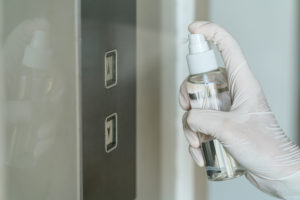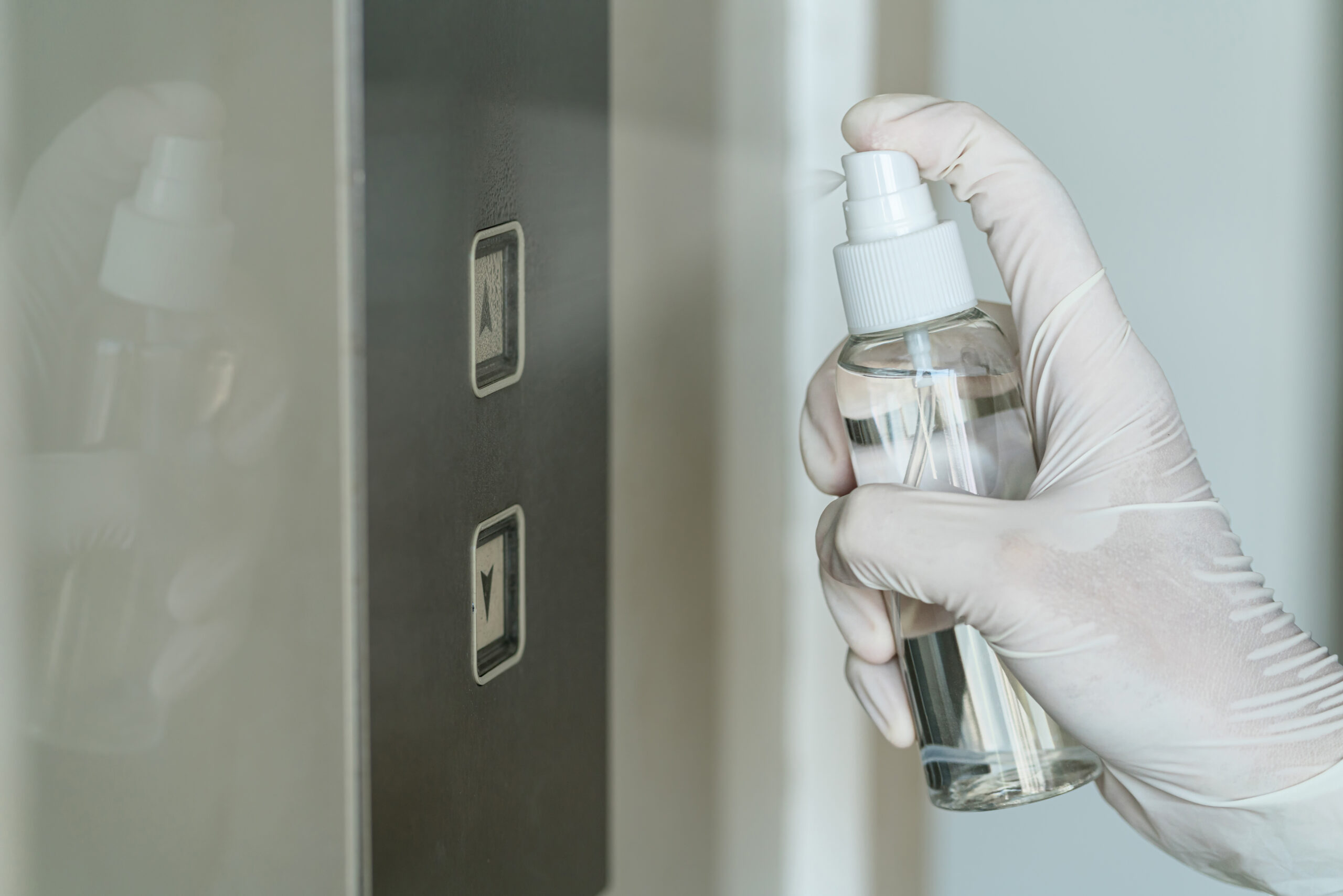

Photo: muratart/Shutterstock.com
Multifamily properties, particularly multi-story elevator buildings, are densely populated and pose a potential problem for those people trying to physically distance and avoid contamination in the COVID-19 era.
We asked Kim Betancourt, CRE®; Paula Munger, CRE®; and Scott Muldavin, CRE®:
How can the multifamily sector survive and thrive? What solutions and technology can help residents and employees optimize healthy living—both environmentally and socially? Are there any particular problems for affordable housing projects?
How the Multifamily Sector Can Survive and Thrive
By Kim Betancourt, CRE®
Director of Economics and Multifamily Research | Fannie Mae
We expect the multifamily sector to be impacted in 2020 from rising vacancy rates and declining and negative rent growth. Nevertheless, we expect the sector to weather the COVID-19 storm better than other commercial real estate property types, most notably hotel and retail, since there still is a shortage of all housing across the nation, in particular affordable housing. The current crisis is likely to exacerbate that shortage over the short-term. With some new construction projects delayed due to local health and safety limitations, in addition to supply chain disruptions and the ongoing labor shortage, we expect new multifamily deliveries will decline quite a bit this coming year.
How can the multifamily sector survive and thrive? In my personal opinion, the best way forward is for multifamily property owners and residents to work together, and there have already been early signs that this is occurring. A number of professionally managed multifamily rental properties have been reaching out to residents to see who might need a rent repayment plan or assistance filing for unemployment benefits. Many property management staffs continue coming to work each day, albeit sometimes on a reduced schedule, to fulfill emergency maintenance requests, including checking on the general safety of the residents or addressing other questions from residents. As a result, many property owners are already taking positive and effective action, including: showing concern for their residents; building a sense of good will with the property management staff and the residents; and, perhaps most importantly, maintaining a safe and healthy home and workplace for both the residents and staff. I can’t think of a better “strategic plan” than that.
Some old sectors had already been revived over the past few years, including the development of micro-units with large, open public spaces and co-living properties. Now, perhaps those concepts might be reassessed. Residents that live in small micro-units might prefer to have segmented public spaces to work from home to better provide privacy. Similarly, the concept of living in close quarters with other strangers in a co-living property is not quite the same as having one or two roommates that you know well sharing your apartment. Multifamily property owners will need to remain nimble and agile to identify trends that develop after the current
crisis has passed and best practices should it ever re-occur.
The Information Age is here to stay. The high-tech sector is needed now more than ever, enabling us to all work from home, connect with friends, shop, and conduct our business. The metros that boast high-tech employers are perhaps likelier to fare better than others over the short term, but as the high-tech sector matures, it is likely to expand to many other metros across the country. While we may not end up with jetpacks or flying cars – at least, not yet – we should all benefit from other high-tech improvements that help us work more efficiently – and, more importantly, live healthier, longer, and better lives. •
Innovations in Property Management
By Paula Munger, CRE®
AVP, Industry Research and Analysis | National Apartment Association
For larger, institutional, professionally managed properties, actions taken to date will need to become a regular part of operations. This includes, but is not limited to: increased cleaning and sanitizing (one high-rise operator with 900 residents is sanitizing the elevator after each use), especially access points, common areas and amenity spaces; hand sanitizers and disinfectant wipes in common areas; virtual tours for prospective residents, current residents using the community website, resident portal and email for service requests and rent payments; and leasing/renewal process online and limits on elevator capacity.
Markers and arrows on floors help guide movement and remind residents about social distancing. More than 50 percent of apartment properties in the construction pipelines are mid-rise (typically 4-8 stories) so social-distancing markers/signage should be included in stairwells.
Buildings can implement mandatory scheduling for shared spaces to keep capacity levels lower. Shared amenity spaces set up with virtual participation can give residents the option of attending an event in person (with social distancing) or from afar. Since “sense of community” is so important for residents and events have become an integral part of apartment living, more virtual events will help keep them engaged and feeling part of the community. Examples include online book clubs, fitness challenges, virtual happy hours, photo challenges (pets, kids), trivia night, and sharing recipes for a community cookbook.
In the long term, multifamily buildings can utilize technology to maintain community health. Generally, buildings can create more of a hands-free environment. Voice-command elevators can minimize touching, in addition to using apps and other touchless systems for opening mailboxes, doors to shared spaces and other spaces with high-frequency touchpoints. Apps could also be used for measuring distance to others.
The technology of self-sanitizing rooms already exists in the hotel industry, which could be utilized in fitness centers and other shared spaces. •
Healthy Living in Multifamily and Affordable Housing
By Scott R. Muldavin, CRE®
President | The Muldavin Company, Inc.
In the emergency phase, key actions include closing non-essential amenity areas; placing hand sanitizers and masks in all key high traffic areas; limiting the number of people in elevators, laundry rooms and other essential areas; controlling access to buildings by managing food deliveries and packages; enhancing sanitation and cleaning protocols and implementing virtual leasing. Hopefully, in advance, an emergency communications plan has been prepared that can be implemented to educate and inform residents and staff of new rules and procedures.
Many new and established technologies can also help: virtual leasing, video call technology for tenants and visitors, technology-enabled elevator and amenity area access, remote sensors, and most important of all, affordable high-speed internet service. Technology enhanced signage and lobby communications can also be helpful.
Building technology is also important. Certifications like the International Well Building Institute’s Multi-family WELL Building standard are based on existing technologies that can improve air filtration and ventilation, as well as design, operations and product protocols for healthy entrances, easy to clean surfaces, and cleaning. Numerous new building related technologies to address COVID-19 are under development including COVID-19 specific sanitizers and UV lighting applications (which can kill the virus). Stay tuned.
Affordable multifamily confronts similar challenges to traditional apartments, but also faces unique COVID-19 concerns. Affordable buildings often do not have the budgets to implement helpful new technologies or operating procedures. Many affordable buildings have existing health problems that exacerbate COVID-19 concerns.
The Green and Healthy Homes Initiative has been working for years on the millions of homes that still expose children to lead poisoning, poor ventilation, and do not properly control leaks—which lead to high asthma rates, a critical problem in the COVID-19 era. People who make less also typically have a more difficult time working remotely and are under more financial pressure to continue to work to make ends meet, increasing their COVID-19 risk, and the risk to the places where they live. •






